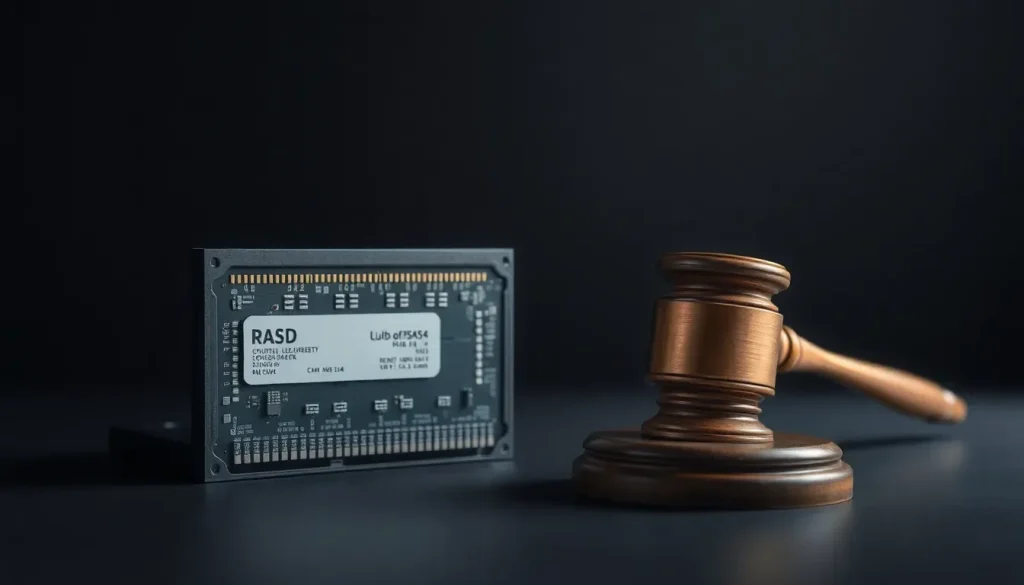UK Court of Appeal rules that storage includes RAM

In a significant ruling by the UK Court of Appeal, the definition of data storage was addressed in the context of a high-profile case involving intercepted encrypted messages from EncroChat mobile phones. This decision has sparked debate over what constitutes "storage" in the realm of information technology and how this definition applies in legal contexts. As technology continues to evolve, such interpretations will likely have lasting implications for law enforcement and legal frameworks.
The ruling has implications not only for the specific case but also for how data privacy, security, and law enforcement interact in our increasingly digital world. As we explore the nuances of this ruling, it’s essential to understand the legal definitions and their ramifications in both technology and law.
Understanding the dual meanings of storage
The notion of storage encompasses two primary meanings that are relevant to this discussion: the common understanding of the term and its technical interpretation within the realm of IT. In everyday language, storage refers to the act of retaining data for future use, while memory can be seen as the cognitive ability to recall information.
In the context of human cognition, however, it is crucial to recognize that when life ceases, the contents of our memories vanish, reflecting a form of volatility. This contrasts sharply with the way data is treated in IT environments, where memory contents are categorized as volatile (lost upon power loss), and storage refers to persistent data that remains intact regardless of power cycles.
- Volatile Memory: Temporary storage that is lost when power is turned off.
- Persistent Storage: Data that remains intact regardless of power status.
The distinction between storage and transmission
Within the court case, a critical distinction emerged between storage and transmission of information. The legal framework requires different warrants for law enforcement to intercept and obtain data, depending on whether it is stored or in transit. Understanding this distinction is vital for grasping the implications of the ruling.
According to UK law, police need separate warrants for different types of data recovery:
- Stored Data Warrant: Required to access and use data that has been saved.
- Transmission Warrant: Needed to intercept live data being transmitted.
In this case, the information retrieved from EncroChat phones was obtained through a storage warrant, which led to the defense arguing that the data being accessed was in transit rather than stored, as it was sourced from the phones’ dynamic RAM (DRAM).
The justices clarified that what was intercepted could not be classified as transmitted data because it was encrypted at the time of interception. Therefore, it was treated as a "draft," further solidifying the argument that it was indeed stored data.
Legal definitions in context: No technical terms in the 2016 Act
The justices of the Appeal Court took issue with the interpretations of "expert witnesses" who argued that making a copy of the data during the transmission process should qualify it as being transmitted. The court emphasized that while these technical perspectives are valuable, they do not align with the legal intent behind the legislation.
The judgement highlighted that the law defines data in only two states: stored or transmitted. If it cannot be classified as transmitted, then it must be considered stored, regardless of the technical processes involved in the data's journey.
This reasoning can be likened to the process of mailing a letter, which involves multiple steps:
- Writing the letter
- Placing it in an envelope
- Affecting postage with a stamp
- Dropping it in the post box (the only act of transmission)
Only the final action represents the actual transmission of the letter, while the preceding steps are necessary for that transmission but do not constitute it.
Implications of the ruling
The ramifications of this ruling are significant for both legal precedents and the broader implications for digital privacy and law enforcement protocols. As the digital landscape evolves, legal definitions must keep pace with technological advancements. This case serves as a crucial reference point for:
- Law Enforcement Procedures: Establishing clear guidelines on how warrants are obtained and executed.
- Privacy Rights: Evaluating how data is protected and the extent of governmental access.
- Legal Frameworks: Potentially prompting legislative changes to clarify definitions in light of new technologies.
Additionally, the ruling may influence future cases dealing with data interception and warrants, especially as courts face increasingly complex technological scenarios.
Looking forward: The evolving landscape of data storage and law
As we move forward, it is evident that the definitions of storage and transmission will continue to be scrutinized. Technological advancements, such as the rise of cloud storage, artificial intelligence, and encryption methods, will challenge existing legal frameworks. The court's ruling in this significant case represents a moment in which law and technology intersect, and it is likely to set a precedent for future legal interpretations.
For those interested in related developments, a video discussing the implications of the court's ruling can provide additional insights:
Ultimately, as technology and legal interpretations evolve, staying informed about these changes will be crucial for both legal professionals and the public at large, ensuring that privacy rights and law enforcement capabilities are balanced effectively.




Leave a Reply